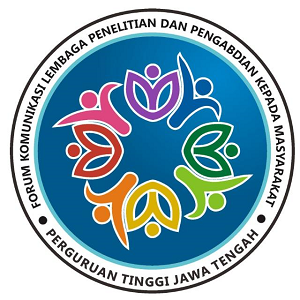PERAN INOVASI KONSUMEN DALAM MENCIPTAKAN NIAT BERPERILAKU (Survei Pada Konsumen SFA Steak & Resto Surakarta)
DOI:
https://doi.org/10.33061/rsfu.v4i1.3385Abstrak
Penelitian ini bertujuan menganalisis pengaruh inovasi konsumen dengan beberapa faktor yang menjadi penentu niat berperilaku konsumen. Penelitian ini berupaya mengetahui pentingnya inovasi konsumen, dengan mempertimbangkan rasa terima kasih konsumen, citra restoran dalam berinovasi, dan kewajaran harga sebagai variabel mediasi. Penelitian ini merupakan survei. Pengumpulan data menggunakan kuesioner. Populasi penelitian adalah konsumen di wilayah Surakarta. Sampel ditentukan sebanyak 130 responden dengan metode convenience sampling, yaitu konsumen yang melakukan pembelian di SFA Steak & Resto Surakarta. Pengujian validitas menggunakan Confirmatory Factor Analysis (CFA), dan Cronbach’s Alpha untuk uji reliabilitas. Analisis data menggunakan Structural Equation Model (SEM) dengan program Amos. Temuan penelitian menunjukkan bahwa inovasi konsumen berpengaruh terhadap ucapan terima kasih dan citra restoran, tetapi tidak berpengaruh terhadap kewajaran harga; ucapan terima kasih berpengaruh terhadap kewajaran harga dan niat berperilaku; citra restoran berpengaruh terhadap kewajaran harga dan niat berperilaku; kewajaran harga tidak berpengaruh terhadap niat berperilaku. Implikasi penelitian hendaknya SFA Steak & Resto Surakarta perlu mempertimbangkan pembuatan menu-menu baru supaya semakin variatif pilihan konsumen, selain itu karyawan perlu mengucapkan terima kasih setelah memberikan pelayanan kepada konsumen.Kata kunci: inovasi konsumen, rasa terima kasih, kewajaran harga, citra restoran, dan niat berperilaku
Referensi
Agu, Godswill., Kalu Innocent Ndu., Agaeze Chimaobi. 2017. “Fast Food Restaurant Image and Sustainable Customer Loyalty In A Period of Economic Recessionâ€. International Journal of Social Sciences and Humanities Reviews. Vol. 7 No. 2, pp. 1–10.
Bin, G. 2013. A reasoned action perspective of user innovation: Model and empirical test. Industrial Marketing Management42 (4): 608-619.
Choo, H. J., S. Y. Sim, H. K. Lee, and H. B. Kim. 2014. The effectof consumers’ involvement and innovativeness on the utilization of fashion wardrobe. International Journal of Consumer Studies 38 (2): 175-182
Chung, J. Y., G. T. Kyle, J. F. Petrick, and J. D. Absher. 2011.Fairness of prices, user fee policy and willingness to payamong visitors to a national forest. Tourism Management 32(5), pp. 1038-1346
Daskalopoulou, I. 2008. Fairness perceptions and observed consumerbehavior: Results of a partial observability model. TheJournal of Socio-Economics Vol 3 (7), pp. 31-44.
Research Fair Unisri 2019 P- ISSN: 2550-0171
Vol 4, Number 1, Januari 2020 E- ISSN: 2580-5819
Dhurup, M., Mafini, C & Dumasi, T. 2014. The impact of packaging, price, and brand awareness on brand loyalty: Evidence from the paint retailing industry, “ Acta Commercii 14 (1), pp. 212-225.
Diller, H. 2008. Price Fairness. Journal of Product & BrandManagement. Vol 17 (5), pp. 353-355.
Englis, B. G., and D. M. Phillips. 2013. Does innovativeness drive environmentally conscious consumer behavior? Psychology & Marketing. Vol 30 (2), pp. 160-172.
Fakhrudin, Arif. 2017. Analisis Pengaruh Consumer Innovativeness dan Market Maven Terhadap Opinion Leadership. Jurnal Manajemen dan Binsis. Vol 8, No 2, hal 142-162.
Ferdinand, A. 2014. Structural Equation Modeling Dalam Penelitian Manajemen. Fakultas Ekonomi Universitas Diponegoro. Semarang.
Grewal, D., D. M. Hardesty, and G. R. Iyer. 2004. The effectsof buyer identification and purchase timing on consumers’perceptions of trust, price fairness, and repurchase intentions.Journal of Interactive Marketing.Vol 18 (4): pp. 87-100.
Hartini, Sri. 2011. Pengembangan Model TAM: Expertice Dan Innovativeness Sebagai Variabel Moderator Studi pada Penggunaan E Banking. Journal of Business and Banking. Vol 1, No. 2, hal 155– 164.
Heo, C. Y., V. der Rest, and X. L. Wang. 2013. Cultural influenceson fairness perception of revenue management pricing in the tourism and hospitality industry. In The 11th Asia Pacific CHRIE Conference
Homburg, C., D. Totzek, and M. Kramer. 2014. How price complexity takes its toll: The neglected role of a simplicity bias and fairness in price evaluations. Journal of BusinessResearch 67 (6), pp. 1114-1122.
Hutama, Christanto Leoma dan Hartono Subagio. 2014. Analisa Pengaruh Dining Experience terhadap Behavioral Intention dengan Customer Satisfaction sebagai Variabel Intervening (Studi Kasus: Domicile Kitchen and Lounge). Jurnal Manajemen Pemasaran Petra. Vol. 2 (1), hal . 1-8.
Hwang, J., and S. S. Hyun. 2013. The impact of nostalgia triggerson emotional responses and revisit intentions in luxury restaurants:The moderating role of hiatus. International Journal of Hospitality Management. Vol 3 (3), pp. 250-262.
Hyun, S. S., and J. Kang. 2014. A better investment in luxury restaurants: Environmental or non-environmental cues? International Journal of Hospitality Management Vol 3 (9), pp. :57-70.
Jang, S., and Y. Namkung. 2009. Perceived quality, emotions, andbehavioral intentions: Application of an extended Mehrabian–Russell model to restaurants. Journal of Business Research.Vol 62(4), pp. 451-60.
Jeong, E., and S. S. Jang. 2011. Restaurant experiences triggeringpositive electronic word-of-mouth (eWOM) motivations. International Journal of Hospitality Management.Vol 30 (2), pp. 356-366.
Jin, (Paul), Naehyun, Ben Goh, Lynn Huffman and Jingxue Jessica Yuan. 2015. Predictors and Outcomes of Perceived Image of Restaurant Innovativeness in Fine-Dining Restaurants. Journal of Hospitality Marketing & Management. Vol 24 (5), pp. 457-485.
Kim, S., and J. S. Lee. 2013. Is satisfaction enough to ensure reciprocity with upscale restaurants? The role of gratitude relative to satisfaction. International Journal of Hospitality Management.Vol 3 (3), pp. 118-128.
Kukar-Kinney, M., L. Xia, and K. B. Monroe. 2007. Consumers’perceptions of the fairness of price-matching refund policies.Journal of Retailing.Vol 83 (3), pp. 325-337.
Lane, C. 2013. Taste makers in the “fine-dining†restaurant industry:The attribution of aesthetic and economic value by gastronomicguides. Poetics 41 (4): 342-365.
Nazari, M., Hosseini, M.A.S., and Kalejahi, S.V.T (2014) Impact of Price Fairness on PriceSatisfaction, Customer Satisfaction and Customer Loyalty in Iran TelecommunicationMarket (Case: MTN Irancell Company), Asian Journal of Research in Marketing. Vol.3,No.1,pp. 131-144.
Mathews, M. A., and N. J. Shook. 2013. Promoting or preventing thanks: Regulatory focus and its effect on gratitude and indebtedness.Journal of Research in Personality.Vol 47 (3), pp. 191-195.
Pei, Z., A. Paswan, and R. Yan. 2014. E-tailer’s return policy,consumer’s perception of return policy fairness and purchaseintention. Journal of Retailing and Consumer Services.Vol 21 (3), 249-257.
Peter, J. Paul dan Jerry C. Olson. 2013. Perilaku Konsumen dan Strategi Pemasaran. (Alih Bahasa:Damos Sihombing). Salemba Empat. Jakarta.
Pradhana, Rachmawan Rony., Alwi Suddin dan Suprihatmi Sri Wardiningsih. 2017. “Pengaruh Citra Restoran terhadap Behavioral Intention dengan Kepuasan Pelanggan sebagai Variabel Mediasi (Survei pada Pelanggan Restoran di Seluruh Wilayah Kabupaten Karanganyar)â€. Jurnal Manajemen Sumber Daya Manusia. Vol. 11 No. 2, hal. 251 – 265.
Ryu, K., Han, H., and Kim, T.H., 2008. The Relationships Among Overall Quick-CasualRestorant Image, Perceived Value, Customer Satisfaction, and BehavioralIntention.International Journal of Hospitality Management, Vol. 27, pp. 459–469.
Ryu, K., Lee, HR and Kim, Woo Gon. 2012. The influence of the quality of the physical environment, food, and service on restaurant image, customer perceived value, customer satisfaction, and behavioral intentions. International Journal of Contemporary Hospitality Management. Vol. 24 Issue: 2, pp.200-223.
Schiffman, Leon. G dan Leslie, Kanuk. 2010. Perilaku Konsumen. (Alih Bahasa Zoelkifli Kasip.PT. Indeks. Jakarta.
Sekarsari, Larasati Ayu. 2018. Hubungan antara Restaurant Image, Perceived Value, Customer Satisfaction,dan Behavioral Intention. Kinerja. Vol 15 No 2, hal 108-119.
Setyanta, Budi. 2018. Peran Involvement Sebagai Variabel Pemoderasi Model Loyalitas Pelanggan. Jurnal Ekonomi Bisnis dan Kewirausahaan. Vol. 7 No. 1, 33-57.
Sugiama. A. Gima. 2017. Pengaruh Kemasan, Kewajaran Harga dan Brand Awareness terhadap Brand Loyalty (Studi Kasus pada Wisatawan Nusantara di Kartika Sari Bandung). Jurnal Manajemen Maranatha, Program Studi Manajemen, Fakultas Ekonomi, Universitas Kristen Maranatha. Vol 17, No 1, hal 1-14.
Sukarmen, Putu, Andi Sularso dan Deasy Wulandari. 2013. Analisis Pengaruh Inovasi Produk terhadap KepuasanKonsumen dengan Keunggulan Bersaing Sebagai VariabelIntervening Pada Produk Gula Pasir Sebelas (Gupalas)Pabrik Gula Semboro PTP Nusantara XI (Persero). Jeam. Vol 12 No 1, hal 63-79.
Vol 4, Number 1, Januari 2020 E- ISSN: 2580-5819
Xia, L., and K. B. Monroe. 2010. Is a good deal always fair?Examining the concepts of transaction value and price fairness.Journal of Economic Psychology 31 (6), pp. 884-894.
Yun, W., and C. Hira. 2012. The effect of fashion innovativeness on consumer’s online apparel customization. InternationalJournal of Organizational Innovation.Vol 5 (2), pp. 263-283
Unduhan
Diterbitkan
Terbitan
Bagian
Lisensi
- Hak publikasi atas semua materi informasi yang tercantum dalam situs jurnal ini dipegang oleh dewan redaksi/editor dengan sepengetahuan penulis. Pengelola Jurnal akan menjunjung tinggi hak moral penulis.
- Aspek legal formal terhadap akses setiap informasi dan artikel yang tercantum dalam situs jurnal ini mengacu pada ketentuan lisensi Creative Commons Atribusi-NonCommercial-No Derivative (CC BY-NC-ND), yang berarti bahwa hanya dengan izin penulis, informasi dan artikel Jurnal PKM dapat didistribusikan ke pihak lain dengan tanpa merubah bentuk aslinya untuk tujuan non-komersial.
- Setiap terbitan Jurnal PKM, baik cetak maupun elektronik, bersifat open access untuk tujuan pendidikan, penelitian, dan perpustakaan. Di luar tujuan tersebut, penerbit atau pengelola jurnal tidak bertanggung jawab atas terjadinya pelanggaran hak cipta yang dilakukan oleh pembaca atau pengakses.




















